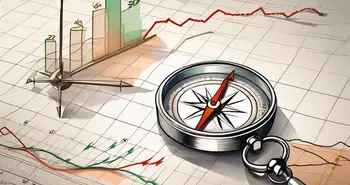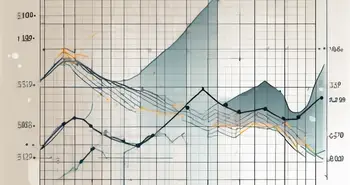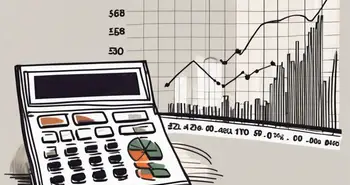The Importance of Capitalization in Trading

Trading can be an exhilarating and potentially lucrative endeavor. Whether you're a seasoned trader or just starting out, one aspect that cannot be overlooked is capitalization. It is the foundation upon which successful trading is built. In this article, I will delve into the significance of capitalization in trading, providing you with valuable insights and strategies to optimize your trading journey.
Understanding Capitalization in Trading
Before we venture any further, let's clarify what we mean by capitalization in trading. In simple terms, it refers to the amount of money that a trader has available to invest in the markets. Think of it as the lifeblood of your trading activities. Without sufficient capitalization, your ability to take advantage of profitable opportunities may be severely limited.
Essentially, capitalization allows you to cover the costs associated with trading, such as buying stocks, paying fees, and managing potential losses. It provides you with the necessary firepower to weather the ups and downs of the market.
Definition of Trading Capitalization
Trading capitalization encompasses the total amount of funds you have at your disposal for trading purposes. It consists of the money you have set aside specifically for trading, excluding personal savings or emergency funds. This clear demarcation is crucial to avoid any mix-ups or confusion with other financial resources.
Key Components of Trading Capitalization
When evaluating your capitalization needs, it's essential to consider a few key components. Firstly, assess your risk tolerance. Determine how much of your capital you are willing to risk on any given trade. This percentage can vary depending on your risk appetite and overall trading strategy.
Secondly, factor in transaction costs. These can include brokerage fees, exchange fees, and any other associated expenses. These costs can add up, especially if you are an active trader, so make sure to account for them when calculating your capitalization requirements.
Lastly, keep in mind the potential for losses. No trader is immune to losses, and a prudent capitalization strategy accounts for this reality. By setting aside a portion of your capital as a cushion for losses, you can mitigate the impact of negative trades and have more staying power in the market.
The Role of Capitalization in Trading Success
Capitalization is not merely a technicality; it plays a pivotal role in determining your trading success. Let's explore two aspects where capitalization has a direct impact.
Capitalization and Risk Management
Effective risk management is vital to sustain long-term profitability in trading. Adequate capitalization provides you with the ability to manage risk appropriately. By carefully assessing and allocating your capital, you can ensure that you are not risking an unsustainable portion of your funds on any given trade.
For example, suppose you find an attractive trade opportunity but realize that it requires a significant portion of your trading capital. In such cases, having enough capitalization allows you to analyze the risk-reward ratio and see whether the potential profit justifies the risk. This disciplined approach to risk management can help protect your capital and keep your trading endeavors sustainable.
Capitalization's Impact on Trading Decisions
Insufficient capitalization can lead to suboptimal trading decisions. When you are low on capital, the temptation to take on higher risks in search of quick profits can be hard to resist. However, succumbing to this temptation often leads to poor decision-making and increases the likelihood of incurring losses.
On the other hand, with ample capitalization, you have the flexibility and mental bandwidth to make rational and well-thought-out trading decisions. You can stick to your trading plan, implement proper risk management techniques, and patiently wait for high-quality opportunities that align with your strategy.
Strategies for Effective Capitalization in Trading
Capitalization is not a one-size-fits-all concept. As a trader, you need to assess your unique needs and circumstances to determine your optimal capitalization strategy.
Assessing Your Capitalization Needs
Start by evaluating your trading goals and risk tolerance. Determine the minimum amount of capital required to comfortably execute your trading strategy while accommodating potential losses. This assessment should be an ongoing process as your trading journey evolves and your financial situation changes.
Furthermore, regularly monitor your capital position and reassess your capitalization strategy accordingly. As your capital grows, you may choose to allocate a portion of your profits to increase your trading capital, giving you the ability to pursue more opportunities or take larger positions.
Balancing Capitalization and Profit Goals
While capitalization is crucial, it's equally important not to tie up excessive amounts of your capital in a single trade. Striking a balance between capitalization and profit goals is key. This involves identifying the optimal position size that maximizes potential returns while keeping risk within acceptable limits.
Consider utilizing position sizing methodologies, such as the percentage risk model or the fixed monetary model. These approaches allow you to allocate a consistent percentage or fixed amount of your capital to each trade, ensuring consistent and manageable risk exposure.
Common Mistakes in Trading Capitalization
It's crucial to be aware of common mistakes that traders make when it comes to capitalization. By avoiding these pitfalls, you can enhance your trading performance and increase the longevity of your trading endeavors.
Overcapitalization in Trading
Overcapitalization occurs when traders allocate an excessively large portion of their capital to a single trade. While the allure of high potential returns may be enticing, the risks escalate significantly. If the trade goes south, the impact on your overall capital can be substantial, potentially jeopardizing your long-term trading prospects.
To avoid overcapitalization, be mindful of the risk-to-reward ratio of each trade. Stick to a sensible risk management plan and be disciplined in your position sizing. Remember, the goal is sustainable trading over the long haul.
Undercapitalization Risks
Conversely, undercapitalization is a common issue, particularly for traders starting with limited funds. Insufficient capitalization can lead to missed opportunities and may force you to exit potentially profitable trades prematurely. It can also induce psychological pressure, as you may be prone to making impulsive decisions motivated by a fear of losing the only capital you have.
Building adequate capitalization takes time, but it's worth the patience and effort. Consider gradually scaling up your trading activities as your capital grows and allocate a percentage of your profits back into your trading account. This approach allows for organic growth and reduces the risks associated with undercapitalization.
The Future of Capitalization in Trading
As technology continues to reshape the trading landscape, capitalization is poised to play a pivotal role in shaping the future of trading.
Technological Advances and Capitalization
Advancements in technology have made trading more accessible to a broader audience. Today, trading platforms and apps offer users the opportunity to start trading with minimal capital. These innovations have lowered the barriers to entry, allowing individuals with smaller capital bases to participate in the markets.
Furthermore, algorithmic trading and automation have gained traction. These technologies rely heavily on capitalization, as they often require substantial investments in infrastructure, research, and development. As technology continues to evolve, we can expect capitalization to remain a central enabler of trading progress and profitability.
Trends in Trading Capitalization
In recent years, we've witnessed a growing movement toward alternative financing methods for traders. Crowdfunding and peer-to-peer lending platforms have emerged, providing traders with alternative avenues to raise capital. These platforms offer an opportunity to pool resources and access additional capital beyond what an individual trader might have initially.
Additionally, the popularity of social trading and copy trading has grown. These platforms enable traders to allocate a portion of their capital to replicate the trades of experienced and successful traders. While this approach may reduce the skill and experience required, capitalization remains vital to participate and benefit from these platforms.
FAQ
What is trading capitalization?
Trading capitalization refers to the amount of money available for trading activities. It constitutes the funds specifically set aside for trading, excluding personal savings or emergency funds.
Why is capitalization important in trading?
Capitalization is vital in trading as it ensures you have the necessary funds to execute trades, cover associated costs, and manage potential losses. It allows for effective risk management and empowers well-informed trading decisions.
How do I assess my capitalization needs?
To assess your capitalization needs, evaluate your trading goals, risk tolerance, and potential losses. Regularly monitor your capital position and adjust your strategy as your trading journey evolves.
What are common mistakes in trading capitalization?
Overcapitalization, allocating too much of your capital to a single trade, and undercapitalization, not having sufficient funds to pursue opportunities, are common mistakes. It's crucial to strike a balance and follow a disciplined risk management approach.
How does capitalization affect the future of trading?
As technology advances, capitalization will continue to be integral to the future of trading. It powers technological innovations, such as algorithmic trading, and enables individuals with limited capital to participate through crowdfunding and alternative financing methods.
What should I focus on to optimize my trading capitalization?
Focus on effective risk management, disciplined position sizing, and continuously assessing your capitalization needs. Striking a balance between capitalization and profit goals is key to optimizing your trading capitalization.
By recognizing the paramount importance of capitalization in trading and implementing sound strategies, you position yourself for long-term success. Remember, capitalization provides the fuel that propels your trading journey forward, enabling you to navigate the dynamic and ever-changing landscape of the markets.
Ready to take your trading capitalization to the next level? Discover the revolutionary world of Morpher, where trading meets the cutting-edge technology of blockchain. With Morpher, you can trade a vast array of assets, from stocks and cryptocurrencies to unique markets, all with zero fees and infinite liquidity. Embrace the power of fractional investing, short selling without interest fees, and up to 10x leverage to maximize your trading potential. Your safety is paramount with our non-custodial Morpher Wallet, giving you complete control over your funds. Experience the future of trading on the Ethereum Blockchain with Morpher's Virtual Futures. Sign Up and Get Your Free Sign Up Bonus today, and position yourself for long-term success in the dynamic trading landscape.
Disclaimer: All investments involve risk, and the past performance of a security, industry, sector, market, financial product, trading strategy, or individual’s trading does not guarantee future results or returns. Investors are fully responsible for any investment decisions they make. Such decisions should be based solely on an evaluation of their financial circumstances, investment objectives, risk tolerance, and liquidity needs. This post does not constitute investment advice.

Painless trading for everyone
Hundreds of markets all in one place - Apple, Bitcoin, Gold, Watches, NFTs, Sneakers and so much more.

Painless trading for everyone
Hundreds of markets all in one place - Apple, Bitcoin, Gold, Watches, NFTs, Sneakers and so much more.










